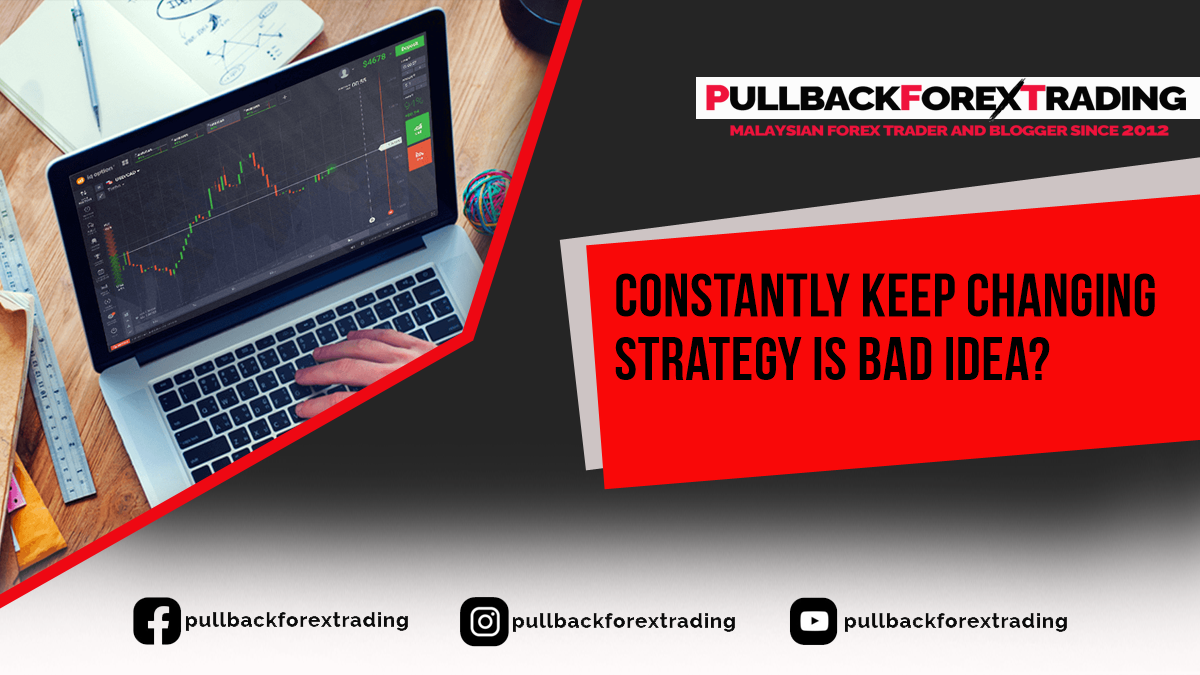
WHY CONSTANTLY CHANGING YOUR TRADING STRATEGY IS NOT A GOOD IDEA
In the world of trading, particularly in Forex, consistency is key. While it may be tempting to switch strategies when things aren’t going your way, constantly changing your approach can often lead to more harm than good. Here’s why sticking to a well-thought-out trading strategy is crucial for long-term success:
1. Lack of Consistency
When you frequently change your trading strategy, you prevent yourself from developing any kind of consistency. Profitable trading is built on the ability to consistently apply a well-developed plan over time. By switching strategies, you never give yourself the opportunity to truly understand how a strategy works, what its strengths and weaknesses are, or how it performs under different market conditions. Without consistency, your results will be unpredictable and erratic.
2. No Time to Test and Optimize
Every trading strategy has a learning curve. You need to give it enough time to understand how it behaves in different market conditions and to gather sufficient data for meaningful analysis. Constantly switching strategies means you never allow one strategy to go through the necessary cycles of testing, learning, and optimizing. You might give up on a strategy just before it starts to work or fail to spot opportunities for fine-tuning.
3. Psychological Instability
Frequent changes in trading strategies can lead to mental and emotional instability. Constantly doubting your approach or searching for the “perfect” strategy can cause you to lose confidence in your abilities as a trader. This leads to overtrading, making impulsive decisions, or exiting trades too early — all of which can reduce profitability. A stable mindset is key for successful trading, and constant strategy changes can undermine that.
4. Loss of Focus on Long-term Goals
Each time you shift your strategy, you essentially reset your progress. Trading success often takes time and a long-term perspective. Switching strategies too frequently can cause you to lose sight of your bigger goals and focus instead on short-term frustrations. This lack of focus can result in missed opportunities and a tendency to chase quick profits, which often leads to losses.
5. Chasing After “Fool’s Gold”
It’s easy to fall into the trap of thinking that the next strategy will be the one that finally delivers the profits you’ve been looking for. But in reality, all strategies have their ups and downs. Even the most profitable traders experience losing streaks. Jumping from one strategy to the next after a few losses is often just a way of avoiding the work required to master a single approach. Instead of chasing fool’s gold, the key is to trust the process and give a solid strategy time to play out.
6. Hidden Costs of Strategy Hopping
Switching strategies frequently may also incur hidden costs. Each new strategy often requires learning new indicators, tools, or software, which can cost time and money. Moreover, you may need to make adjustments to your trading account, which can add transaction fees or other costs. Over time, these hidden costs can eat into your profits.
Conclusion
Sticking to a single, well-thought-out trading strategy and allowing it time to mature is essential for becoming a successful trader. Constantly changing your approach may seem like a solution when things aren’t going well, but more often than not, it leads to confusion, losses, and frustration. Instead, focus on mastering one strategy, understanding its nuances, and refining it through careful testing and analysis. Patience, discipline, and consistency are the true keys to success in trading.


